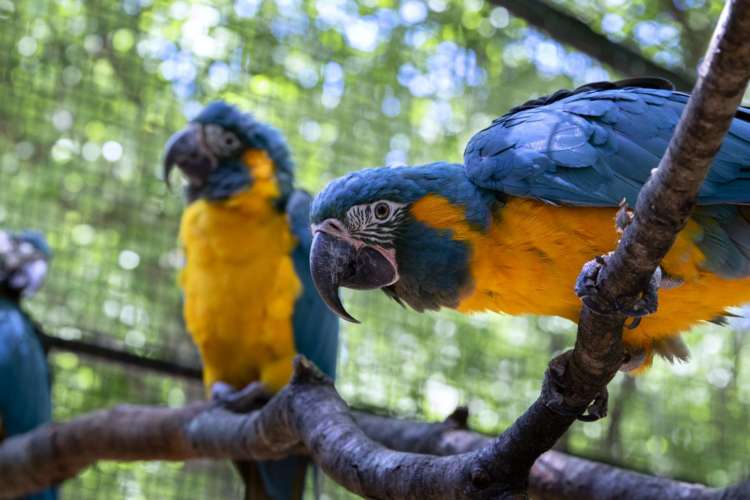Blue-throated Macaw are often called barba azul in Spanish, meaning “blue beard,” because of the bright blue coloration covering their throats. They play an important role in the ecosystem as seed dispersers. These intelligent and colorful birds are critically endanger and threaten by habitat loss and the illegal pet trade.
Unlike other species of macaws, blue-throat macaws are not often see in large flocks. They may appear in small groups of 10 or fewer, but this may be due to there being so few in the wild. While they primarily travel by flying, blue-throat macaws can also climb trees and walk on the ground. Macaws are known for their loud, screeching alarm calls that they make when threaten or frighten. Their bright coloration provides them with camouflage in the wild, allowing them to blend in with bright fruits, leaves and shadows.
Blue-throated Macaw
Macaws are very intelligent birds with large brains. They are naturally curious and manipulate objects well, though tool use is rare in wild parrot species. Blue-throat macaws perform better than primates on some decision-making tasks. Demonstrating that they can inhibit impulsive reactions to get more valuable food rewards in an experimental setting. Macaws, including blue-throat macaws, also play an important role as seed dispersers in their environment. They are the main dispersers of the Motacú palm, the trees they prefer to nest in.
PHYSICAL FEATURES AND CHARACTERISTICS:
Blue-throat macaws get their name from the vivid blue coloration covering their throat and are often call barba azul in Spanish, meaning “blue beard.” Their heads, backs, and outsides of wings and tails are the same. Blue color, while the sides of their faces and chests are a bright yellow-gold.
Blue-throated macaws will mate for life. They are sexually mature at 2-4 years and breed once a year. Interestingly, they do not make their own nests but find cavities in trees that have already been create by grubs that eat and hollow. Mated pairs will often pick a different nesting site each year. Females incubate the eggs while the males bring them food. Once the chicks have hatched, both parents will bring food back to the nest. The chicks will fledge and be ready for their first attempt at flight at 13-14 weeks, but they will stay with their parents for up to a year. In both the wild and here at the Zoo. The blue-throated macaw has a lifespan of up to 50 years, meaning one female could produce 100+ chicks across her lifetime!